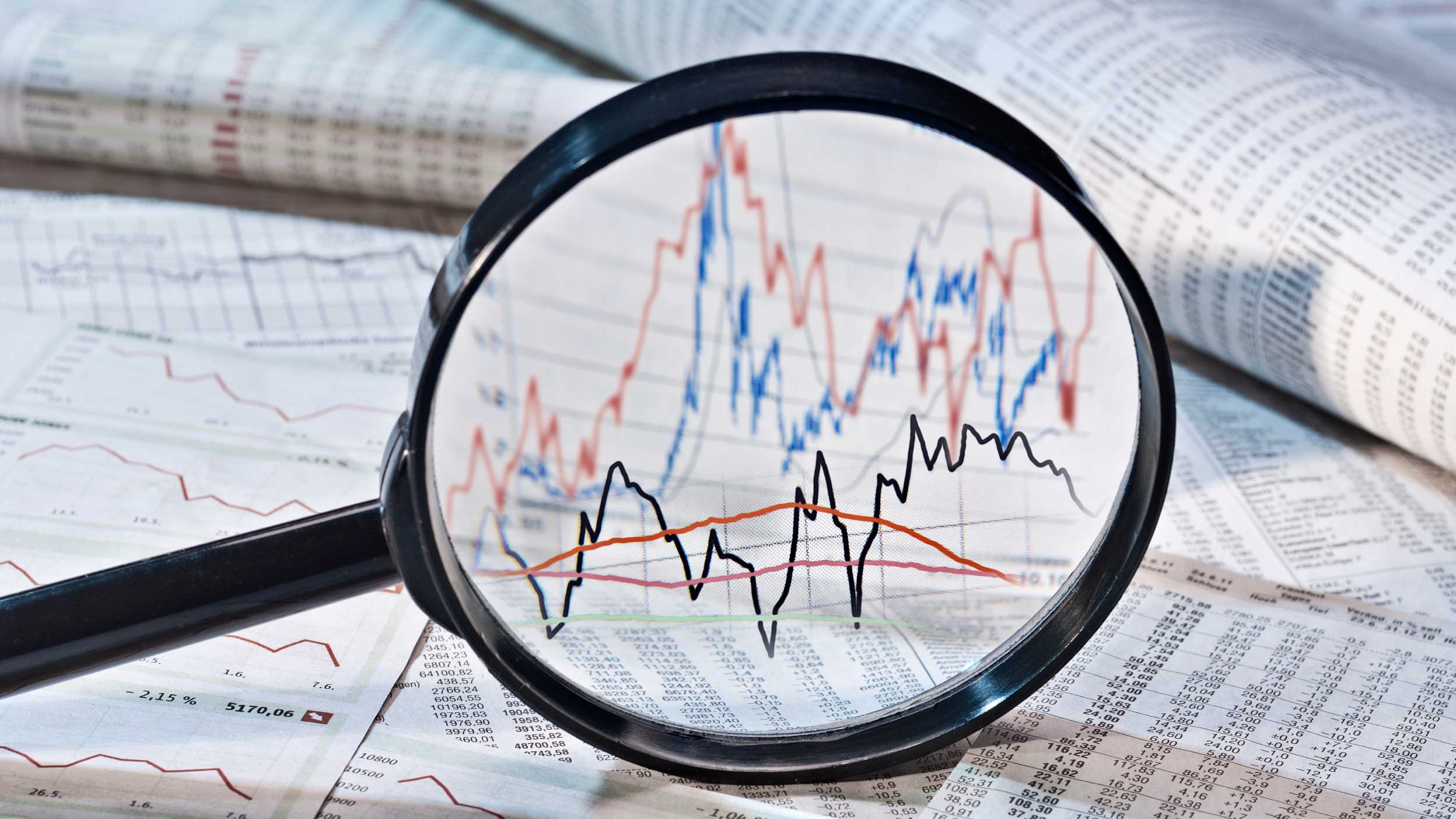
Fixed Income Fixed income solutions
Discover Invesco's diverse fixed income strategies, combining global expertise and innovative solutions to meet your investment needs.
Adaptation and resilience: In this six-minute video, our fixed income experts outline the steps investors can take today to prepare for 2050 and beyond.
According to the IEA, spending on clean energy is set to reach $1.7 trillion this year, and that needs to rise to $4 trillion if we're to meet their net zero scenario.
And this is just spending on clean energy. There are other areas of the economy which need huge amounts of spend if they're also to decarbonise.
This creates a huge range of opportunities, and really exciting opportunities, for our investors. Particularly those investors that want to earn a return, but also want to support decarbonisation.
How could the long-term value of debt instruments be impacted by climate change?
Matt Henly: Environmental risks have the potential to cause fairly meaningful underperformance or outperformance of bonds, particularly in the highly energy intensive sectors.
We're already seeing this play out in the market today.
So if we take the utility sector, for example, the leaders in renewables are already starting to see their bonds trade more expensively than some of their similarly-rated peers.
Tom Hemmant: So this is a really important question, and it's relevant for all of the mandates that we manage – not just those with a climate objective.
Although I actually do think it's perhaps more of an acute problem for equity, where in certain sectors, there's real stranded asset risk that can affect them.
But it is an issue for bondholders. And I think that careful analysis and security selection is needed to navigate the risks.
Matt Henly: The impact on companies’ bond valuations can come from fundamental factors.
So this could be the direct impacts of climate risks on a company's creditworthiness, but also technical factors. So changes in demand preferences for bonds. And in our net zero strategies, we're aiming to mitigate both of these risks for our clients.
Tom Hemmant: On a on a more positive note, I think I see the potential to earn superior risk-adjusted returns, if we can identify those companies that are going to be less affected by the negative trends around climate change. Or actually, preferably, those that are contributing positively to decarbonisation.
It seems to me that these companies have better sponsorship with investors. Because they have a positive long term structural story, I think that those bonds can be more stable over time.
Tom Hemmant: I would also note that there are commentators out there doubting whether we can ever reach net zero and querying the returns on renewable energy, for example. That's fine. And I agree that the road ahead is not always going to be straightforward.
But notwithstanding those doubts and those uncertainties, it's clear there's a big structural trend. There's a problem that needs addressing. And so I think there's still going to be a huge range of opportunities for us. And I think it's a really good area for active investors like ourselves to participate.
Is divestment an effective route to change?
Matt Henly: Divestment can play a part in net zero portfolios, but it needs to be for the right reasons. The essence of net zero strategies is identifying that high emitting sectors play an important role in the global economy, but that these sectors need to decarbonise, and they need capital to do so.1
Our role as fund managers is to pick the best names within that sector, the climate leaders, to engage with them, to better understand their trajectory and to make sure they stick to the right path.
In our net zero portfolios, divestment occurs if a company deviates from that path – not simply because that company has a high carbon footprint today. And that's the key distinction to be made.
1Note: This statement is relevant to the approach taken by some of Invesco’s net zero fixed income strategies, including the Invesco Net Zero Global Investment Grade Corporate Bond Strategy and the Invesco Net Zero Buy and Maintain Strategy. ESG investment strategies can vary, and not all of our ESG fixed income funds will follow the exact same approach.
Can you talk us through your credit selection process? How are climate considerations incorporated?
Matt Henly: To qualify for our net zero portfolios, three criteria need to be met.
We need to have comfort in the creditworthiness of the issuer. We need to see value in the bonds. And we need to have a strong conviction in the net zero credentials of that issuer. And what we mean by that is that we need to see a clear willingness and ability of that company to decarbonise along a net zero 2050 pathway.
The net zero assessments that we do are done for every single company that we invest in for our net zero portfolios, and they're carried out in-house using the strength of Invesco’s investment team, and the ESG team's research capabilities.
Tom Hemmant:
So the climate funds that we manage aim to support the transition to a low carbon economy and there are two elements to the credit selection for these funds. We use quantitative and qualitative analysis in order to ensure that the bond issuer meets the climate objective of the mandate.
The quantitative analysis involves us scoring companies using a range of forward and backward-looking metrics, and then the qualitative analysis involves us doing some sort of deeper work to really understand the business and their plans. And this allows us to contextualise and interpret the output of the quantitative process.
In tandem to this work, we also analyse the financial risk-reward that is being offered by the bonds. Simply put, are our investors being paid enough for the risks that they're taking on?
How can investors implement climate-conscious strategies through ETFs?
Sam Whitehead: ETFs typically passively track the indices. Climate considerations can be incorporated in much the same way you'd incorporate broad ESG metrics.
For some ETFs, the indices they track can use a tilting approach or a best-in-class approach. And that might be based on carbon emissions, or it might be based on a low carbon transition score of some kind.
So the ETF might look to overweight companies which are solutions, and underweight those which will have their assets stranded in the future.
Another unique feature of bonds, which ETFs can take advantage of, is the time exposure for investors is limited. This is different to equities, where you'd have to sell to disinvest.
In this case, you can look to reinvest those proceeds in an issue which more closely aligns with a target portfolio that your ETF is looking at on a rules-based approach.
Hence, you see improvements in climate considerations over time.
Tap into opportunities as the world prepares for 2050. Discover our range of climate-conscious fixed income solutions.
At Invesco, we offer a broad range of fixed income capabilities, including those with a dedicated ESG strategy. This approach allows clients to align their portfolios with their unique values and objectives. We sat down with the experts responsible for these capabilities and asked them some questions. Why does net zero matter for bond investors? And what does low-carbon investing look like in practice?
Time to watch: 6:03 minutes
Analysis from the Intergovernmental Panel on Climate Change (IPCC) clearly shows the challenge ahead of us. Recent temperature rises are unprecedented, even when we look back at a period of more than 2,000 years.
Furthermore, analysis conducted by Invesco’s Paul Jackson suggested that global average temperatures could rise by 3-4 degrees Celsius by the end of the century. That’s considerably higher than the two degree target set under the Paris Agreement.
The good news is that climate change is largely caused by human activity – which means we can do something to limit its extent. Over the coming years, we expect to see significant investment in businesses and technology that supports transition.
This will be an expensive process – and fixed income investors will play an important role in funding it, as they themselves look to navigate the risks and opportunities associated with a net zero world. We delve into these below.
As introduced previously, a huge amount of financing is required to meet the targets of the Paris Agreement. The International Energy Agency (IEA) warns that spending on clean energy alone must triple to curb climate change.
As allocators of capital, fixed income investors will play a huge role in facilitating this. In fact, a range of debt instruments have been developed specifically to support decarbonisation targets, for example, green bonds, sustainability-linked bonds, transition bonds, and more.
Like green bonds, sustainability-linked bonds are debt instruments which aim to promote positive outcomes. Unlike green bonds, they allow the issuer to set more general sustainability goals. This usually takes the form of a predefined sustainability or ESG performance target.
For many investors, it is important to consider environmental risks when assessing the key drivers of risk and return. There are several key reasons for this, which we introduce below.
Climate transition will impact all sectors and geographies, so issuers that are ill-prepared for transition could suffer defaults, losses and impairments. Many credit events have their roots in some kind of ESG-based deficiency.
Regulations are getting stricter all the time. This means companies could risk falling foul of the law, resulting in fines and reputational damage.
If companies fail to meet consumer or investor expectations, they could face reputational damage, consumer boycotts or divestment. All of these would have negative financial outcomes for the company in question.


Let us know your preferences to receive insights and ideas on the themes, strategies and products of most interest to you.
At Invesco, we offer a broad range of fixed income capabilities, including those with a dedicated ESG strategy. This approach allows clients to align their portfolios with their unique values and objectives.

In our regularly updated macroeconomic analysis we offer an outlook for interest rates and currencies – and look at which fixed income assets are favoured across a range of market environments.

Significant focus on the uncertainty of the US macroeconomic backdrop and its potential headwinds on the market remain top of mind for investment opportunities globally. Against this cautious outlook, we asked the experts from Invesco’s bank loan, direct lending and distressed credit teams to share their views as the first quarter of 2025 begins.

Despite the volatility in bond markets throughout January, yields generally ended the month slightly lower, resulting in positive returns for most fixed income asset classes. Read our latest thoughts on how fixed income markets performed during the month and what we think you should be looking out for in the near term.
Net zero refers to a state where greenhouse gas emissions are balanced by greenhouse gas removals from the atmosphere.
The ‘net’ in net zero is important because it will be difficult to reduce all emissions to zero on the required timescale. As well as deep and widespread cuts in emissions, there will likely be a need to scale up GHG removals.
The Paris Agreement underlines the urgency of net zero, requiring states to aim to limit global warming to well below 2°C, and preferably to 1.5°C.
The Paris Agreement is a legally binding international treaty on climate change adopted in December 2015. Its goal is to limit global warming to well below 2°C, preferably to 1.5 °C, compared to pre-industrial levels.
The Paris Aligned Investment Initiative (PAII) provides a common set of recommended actions, metrics and methodologies through which investors can maximise their contribution to achieving net zero by 2050 or sooner.
The PAII was established in May 2019 by the Institutional Investors’ Group on Climate Change. The PAII’s objective is to ensure investors can decarbonise investment portfolios and increase investment in climate solutions, in a way that is consistent with a 1.5°C future.
A 2022 report from McKinsey suggests that the transition to net zero by 2050 will cost around USD275 trillion in spending on physical assets. That equates to USD9.2 trillion in annual average spending – or, in other words, USD3.5 trillion more than today.
To give a sense of scale, the report draws attention to the fact that this increase is equivalent to half of global corporate profits and one quarter of total tax revenue in 2020.
As introduced previously, investors will play a big role in financing this, and fixed income has the potential to deliver a much-needed allocation of capital.
The value of investments and any income will fluctuate (this may partly be the result of exchange rate fluctuations) and investors may not get back the full amount invested.
All data is provided as at 31 October 2023, sourced from Invesco unless otherwise stated.
This is marketing material and not financial advice. It is not intended as a recommendation to buy or sell any particular asset class, security or strategy. Regulatory requirements that require impartiality of investment/investment strategy recommendations are therefore not applicable nor are any prohibitions to trade before publication.
Views and opinions are based on current market conditions and are subject to change.
When using an external link you will be leaving the Invesco website. Any views and opinions expressed subsequently are not those of Invesco.
RO3340635